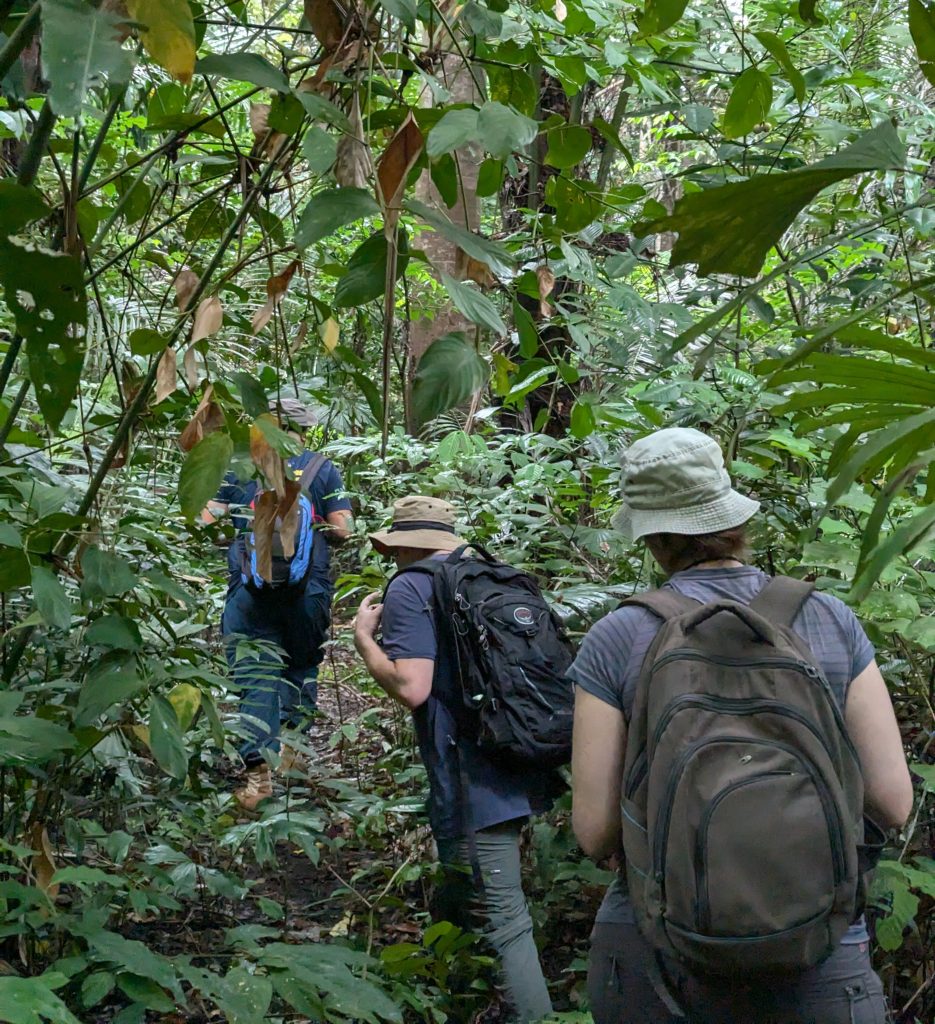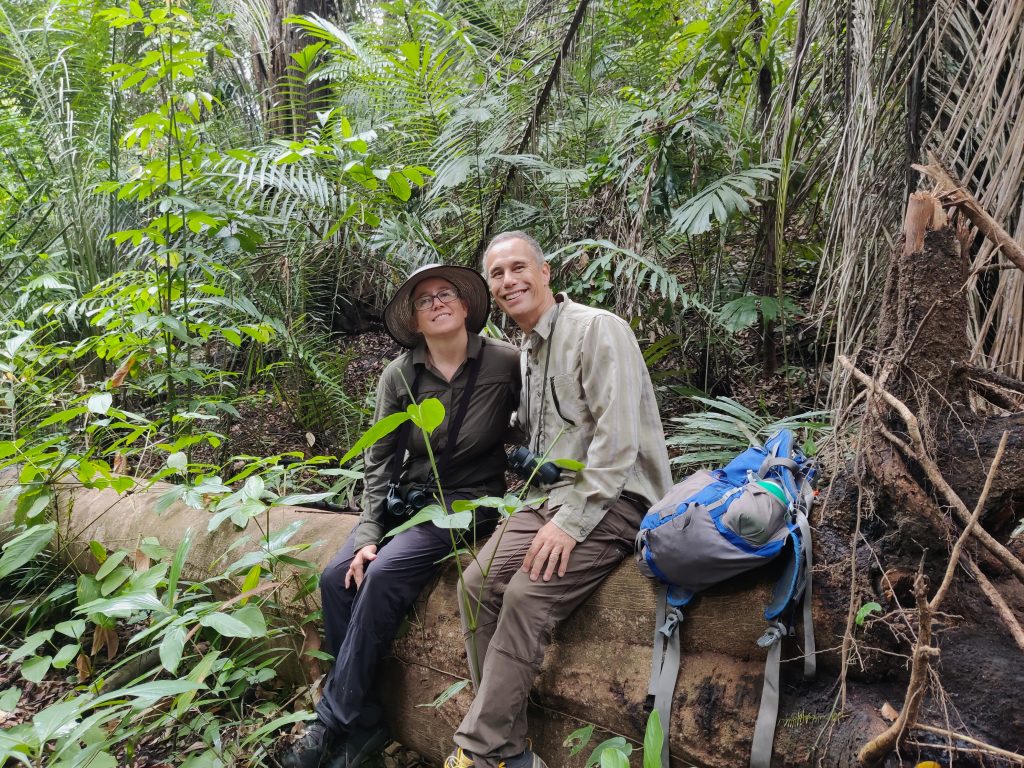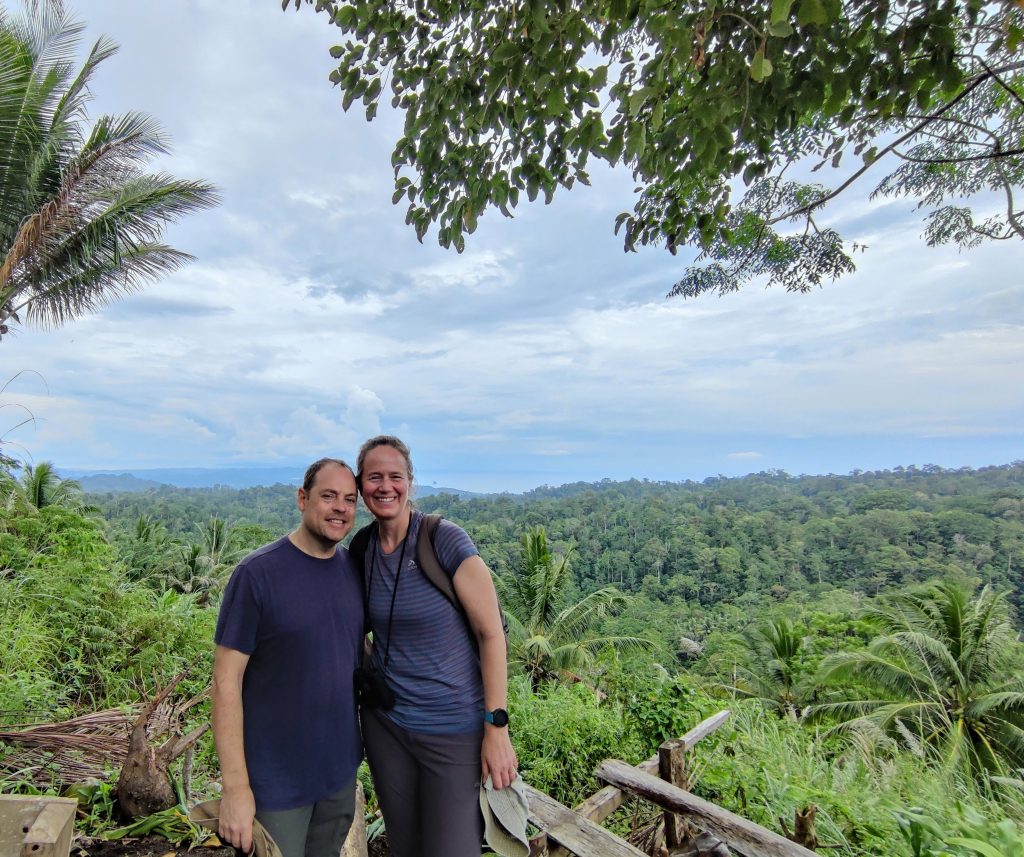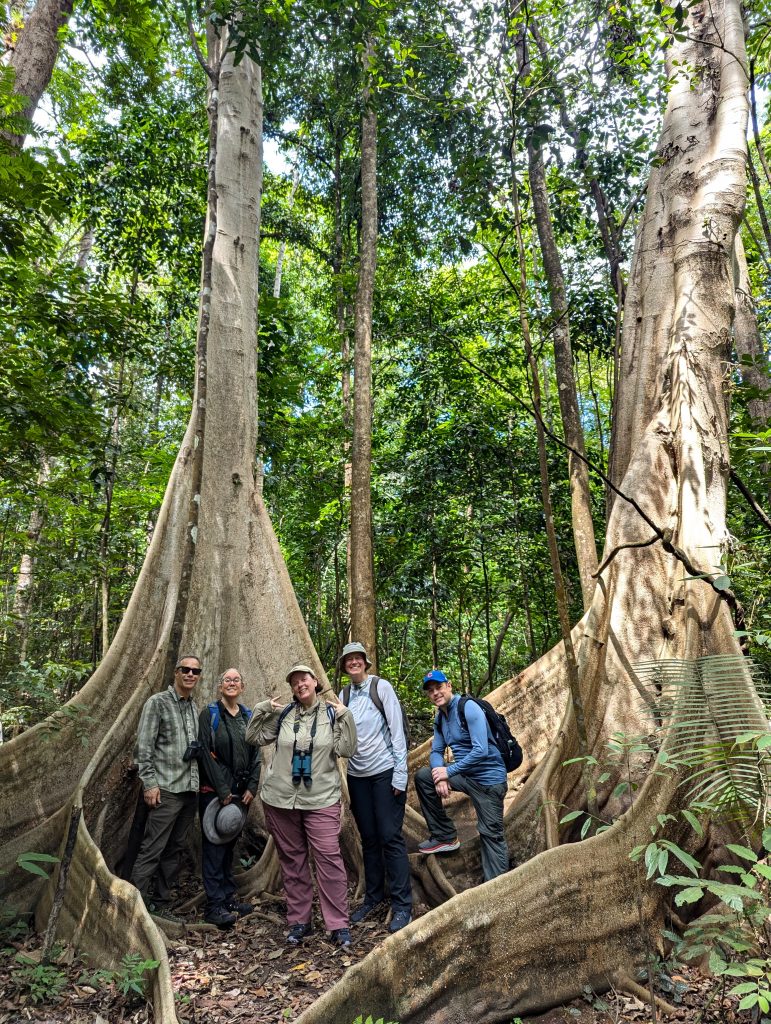
This year for our October break, our old friends, Krista, Laura, and Jim, came to visit! After they all spent a few days in Bali, we met them at Manado in North Sulawesi to visit Tangkoko National Reserve and Bunaken. We first spent three nights at Tangkoko Sanctuary Villas, doing wildlife tours our first full day and a birding tour the second day. Tangkoko is an amazing protected lowland rainforest that is home to a variety of rare and endangered mammals and birds. We were fortunate to get to see many of them up close!
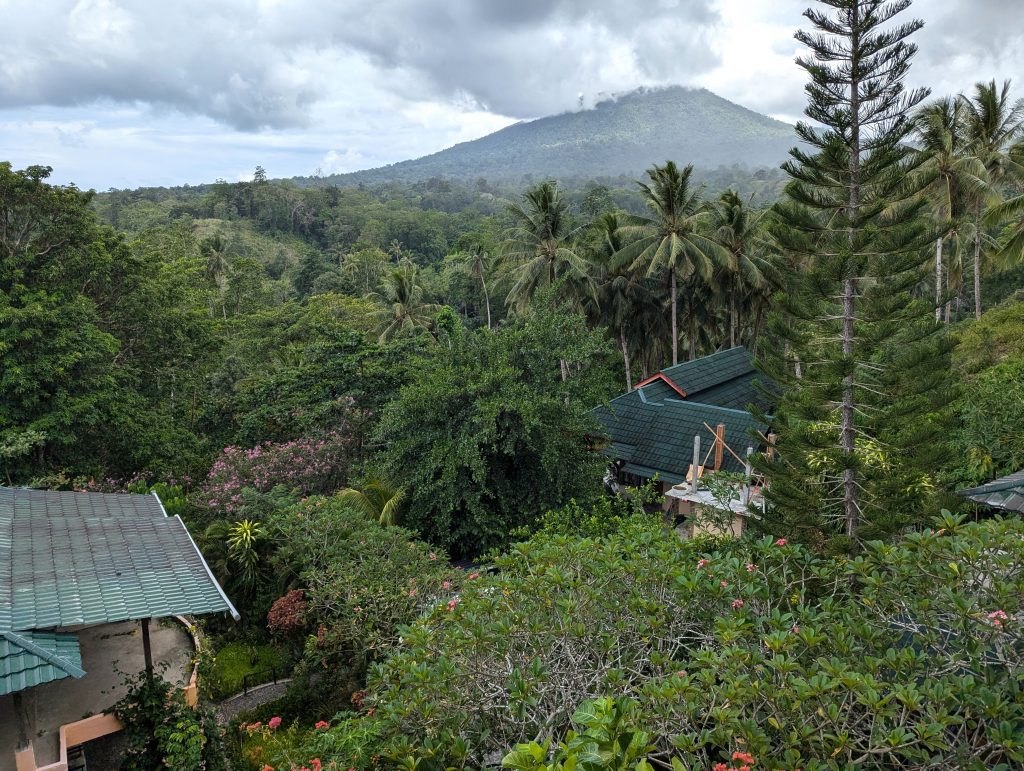
On our first wildlife tour, we left the villas at about 6:30 am to catch the early morning rise of various mammals and birds. Tourists are required to have a local guide, and although there are well-marked paths, you definitely want an expert spotting the rare wildlife! We were lucky right off the bat to be able to see a female bear cuscus with her cub high up in a tree as we started into the park. These marsupials are found only in Sulawesi and surrounding islands, and like many animals here are threatened by hunting, the pet trade, and deforestation. It seemed like they are doing OK at least within the reserve, however, because we saw a number of them. They tend to hang out high up in the trees, eating leaves and resting.
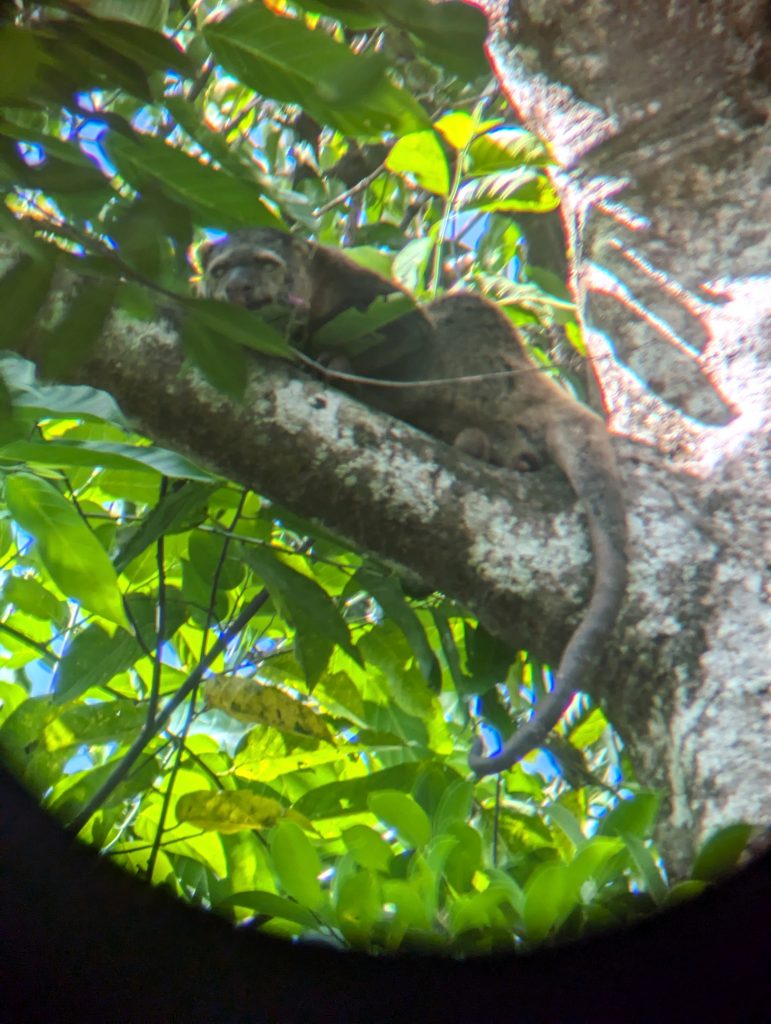
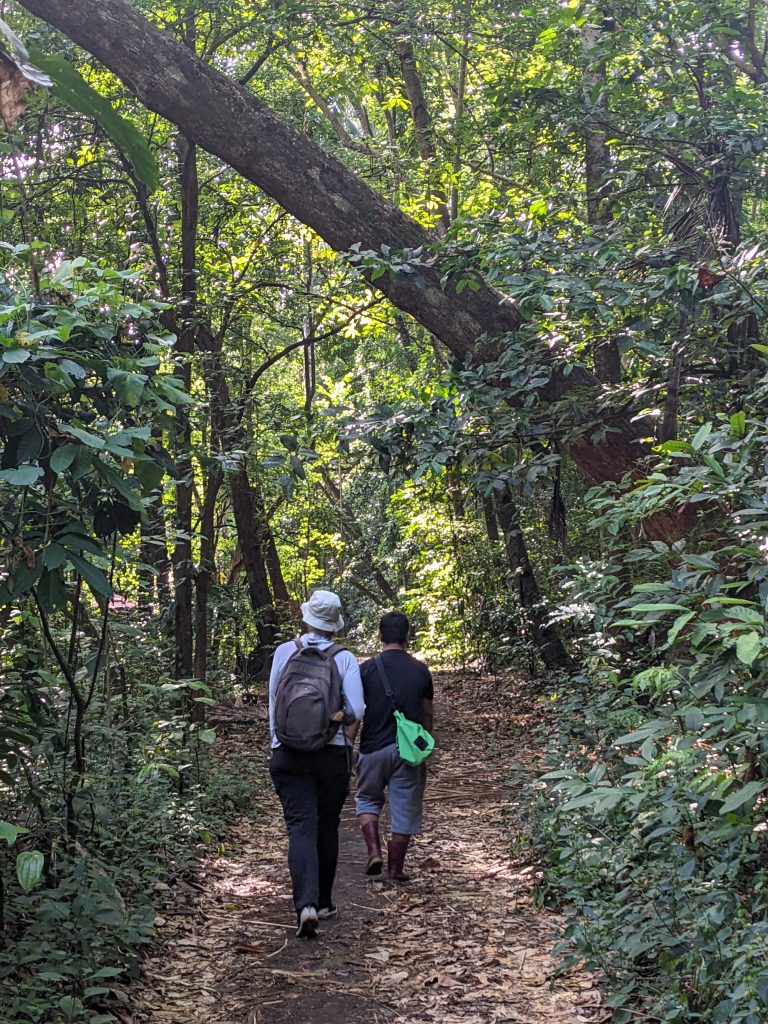
We were lucky to have two expert local guides, a father and son pair, for our wildlife tour. They did an amazing job of spotting animals high up in the trees or hiding in nearby undergrowth. We saw a number of small kingfishers hanging out in trees just off the trails. It’s amazing how these colorful little birds would sit still as we stood and viewed them from 10-15 feet away! Our guides worked together with the people guiding other tourists to share information about where the local population of crested black macaques were traveling for the day. These endangered primates are found only in North Sulawesi, and have been traditionally hunted for food. There are now efforts to preserve them, and Tangkoko has a couple of good-sized family groups. Our guides took us right up near where the larger family of macaques was hanging out grooming each other before casually moving on to other locations, mostly walking along the ground. One issue in Tangkoko is that guides allow tourists to get too close to the wildlife, and we certainly felt that with the macaques. We did have a really good view of them and of two pretty much brand new babies that the females were carrying with them as they traveled!
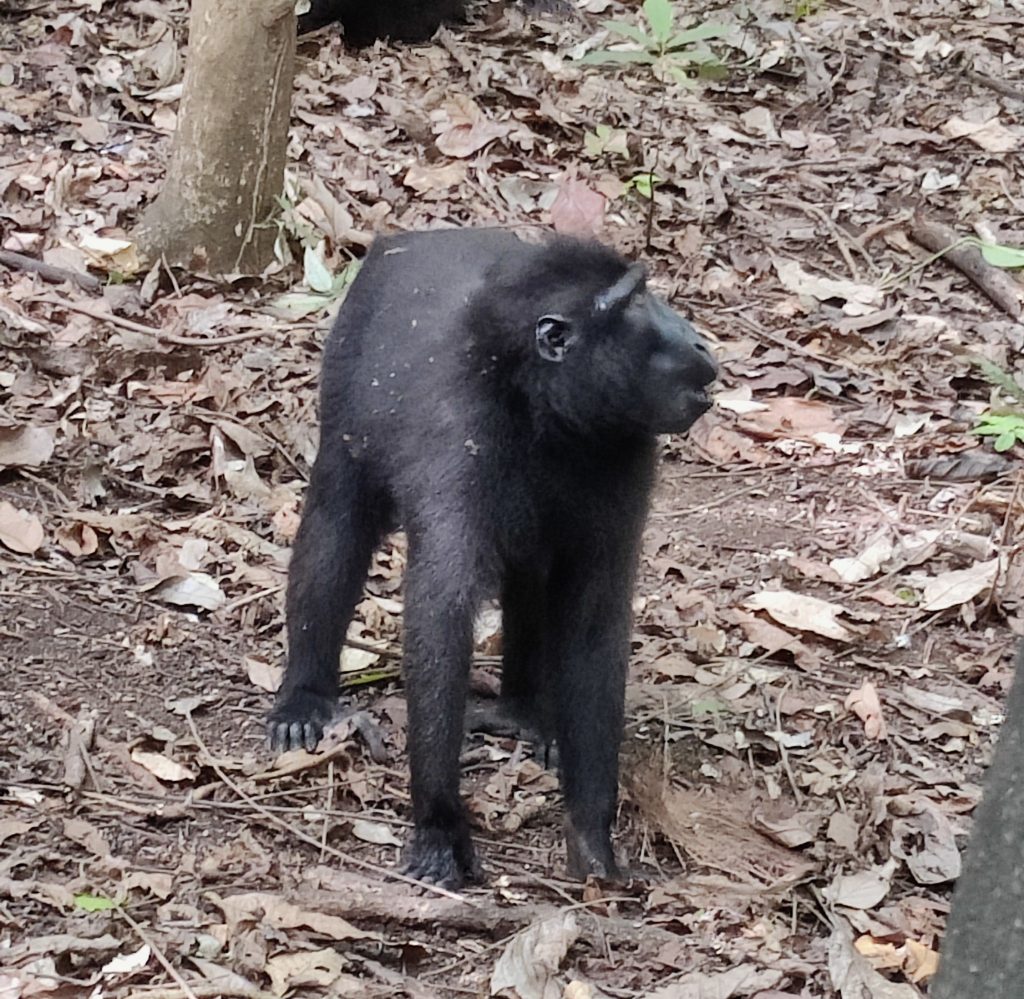
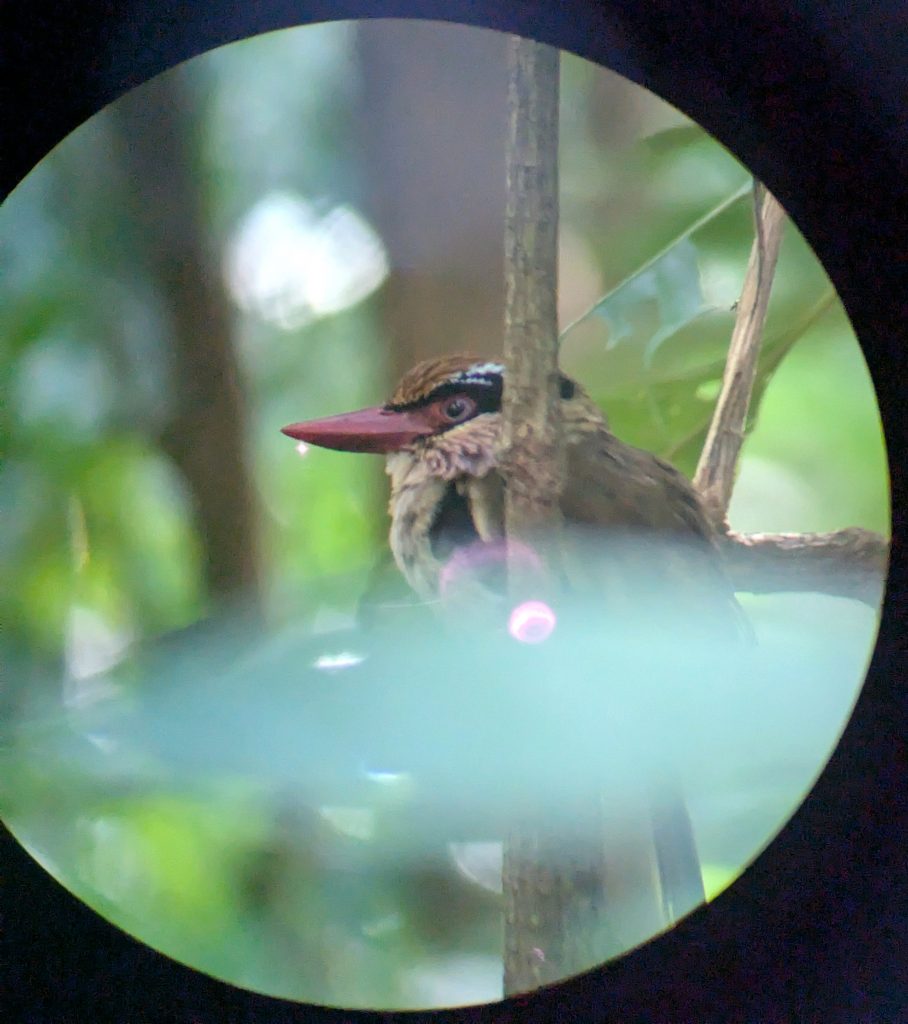
One of the most exciting parts of the morning happened when we heard a very loud bird call resound across the forest. “Hornbills!” our guide exclaimed, and we stopped dead in our tracks to listen. A pair of huge knobbed hornbills flew right over us, and we hustled to follow them. We lost them in that moment, but a while later our guides found them up a tree, and we were able to see them through the binoculars with a great view. They are gorgeous and gigantic birds, and quite rare. We were very lucky to be in the right place at the right time, since they are a bit hard to find when it’s not nesting season.
After a productive morning, we returned to the villas for lunch and some rest. Then, in the late afternoon, we headed back to the reserve with the same guides to catch the evening emergence of nocturnal animals, including tarsiers. Tarsiers are tiny primates (only about the size of a fist) that sleep in nests in trees during the day and go out at night to hunt insects. Seeing these was the main goal of our evening walk, and we weren’t disappointed. The guides know what tree they nest in, and we were stationed there as they headed out for the night to hunt. They seemed quite curious with their big saucer-shaped eyes. Their jumping ability was truly amazing – despite their tiny size, they jumped meters from tree to tree and to the ground and back up again, very much reminding us of cartoon characters. We felt very lucky to be able to observe them from up close as they headed out to hunt for the night!
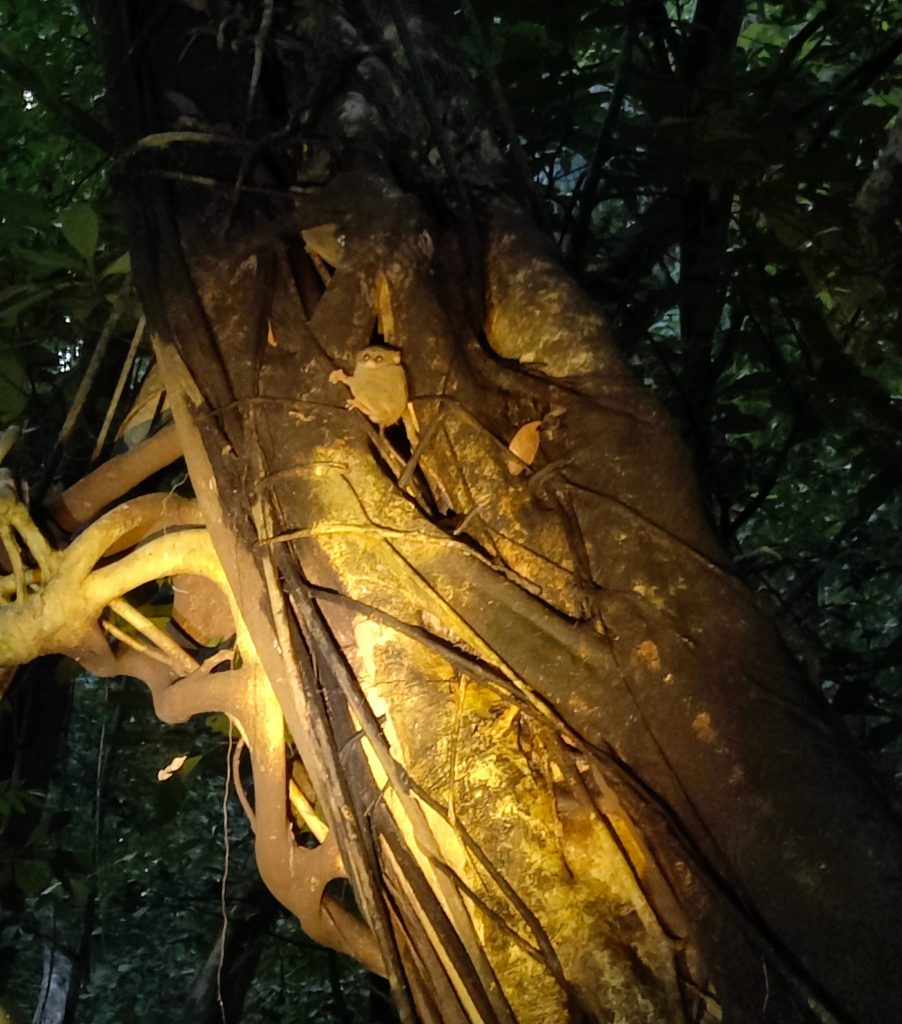
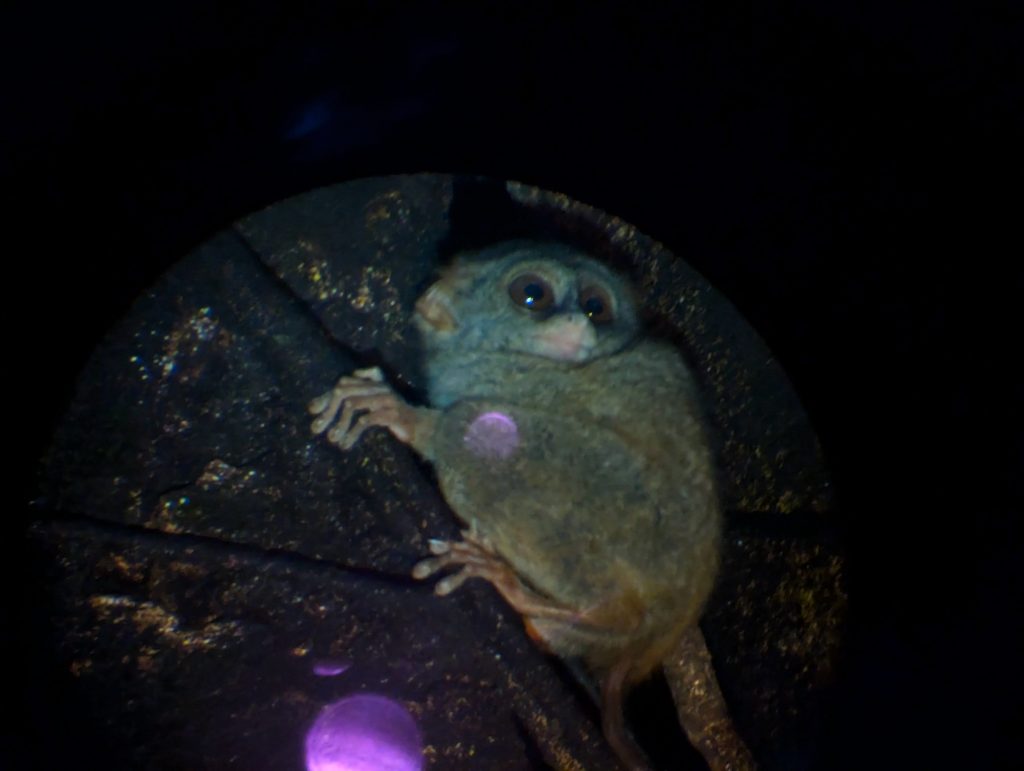
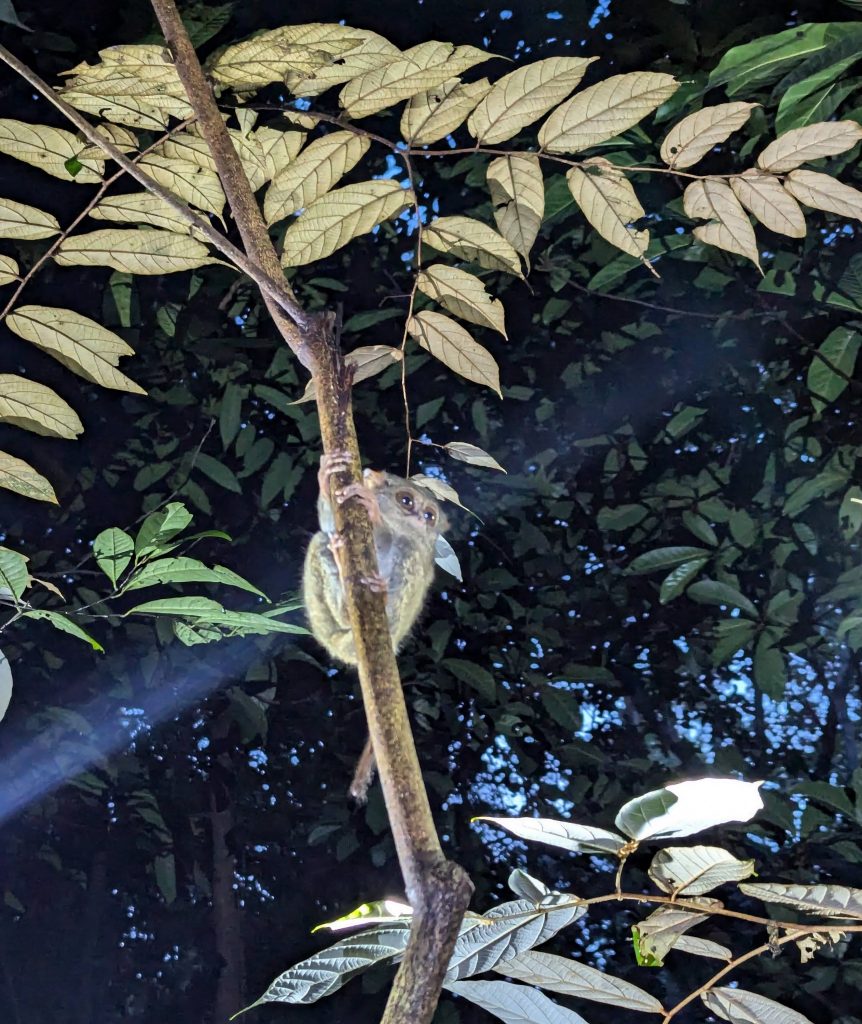
In addition to tarsiers, we saw a number of other cool things in the forest at night, including a huge spider and trees full of bioluminescent scorpions. The guides also new exactly where to see a puffball of a tiny bird sleeping for the night, right over the trail we were walking on!
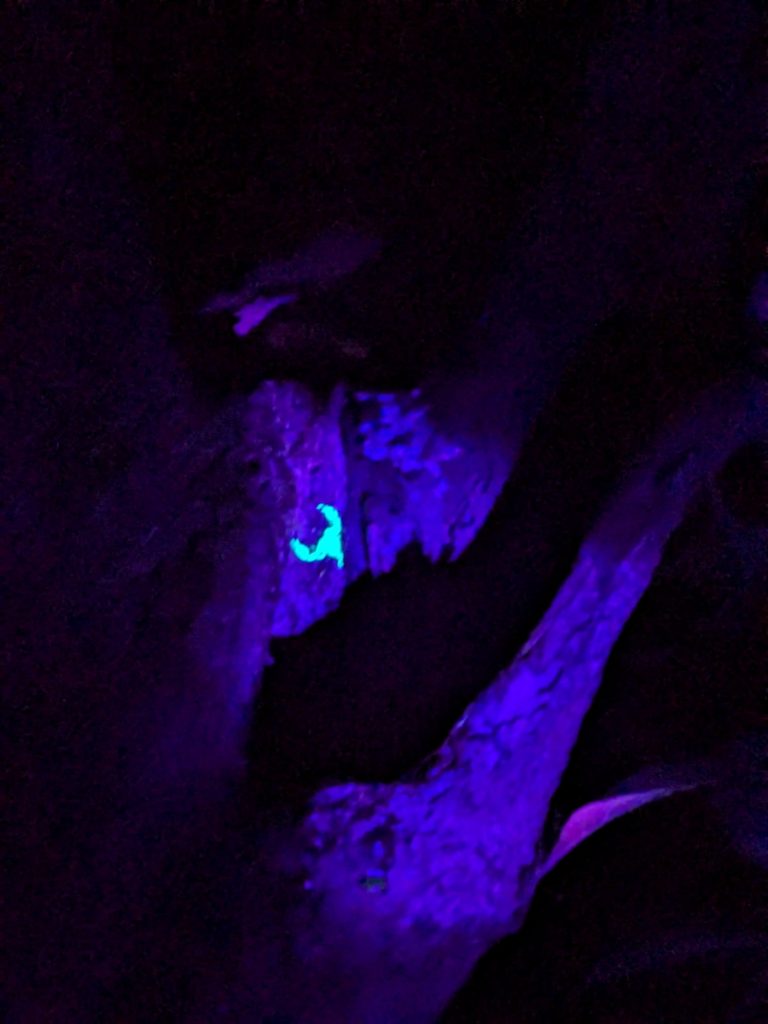
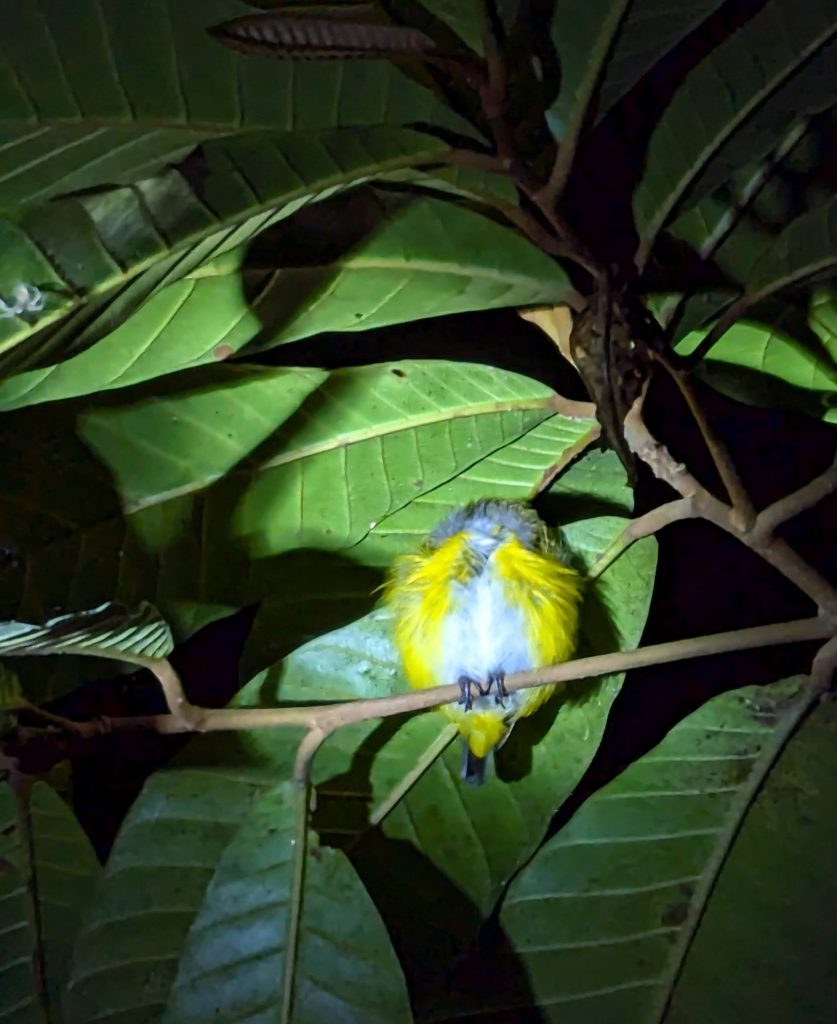
For our bird tour the next day, we again left at 6:30 in the morning with an expert birding guide. We headed back into the reserve, but walked on some new trails to try to see more of the variety of bird life present in the park. It was a fresh and cooler morning, and a great day to see more kingfishers. We also saw a number of imperial pigeons on the tops of far-off trees. They are apparently quite rare – who knew seeing pigeons might be so exciting!
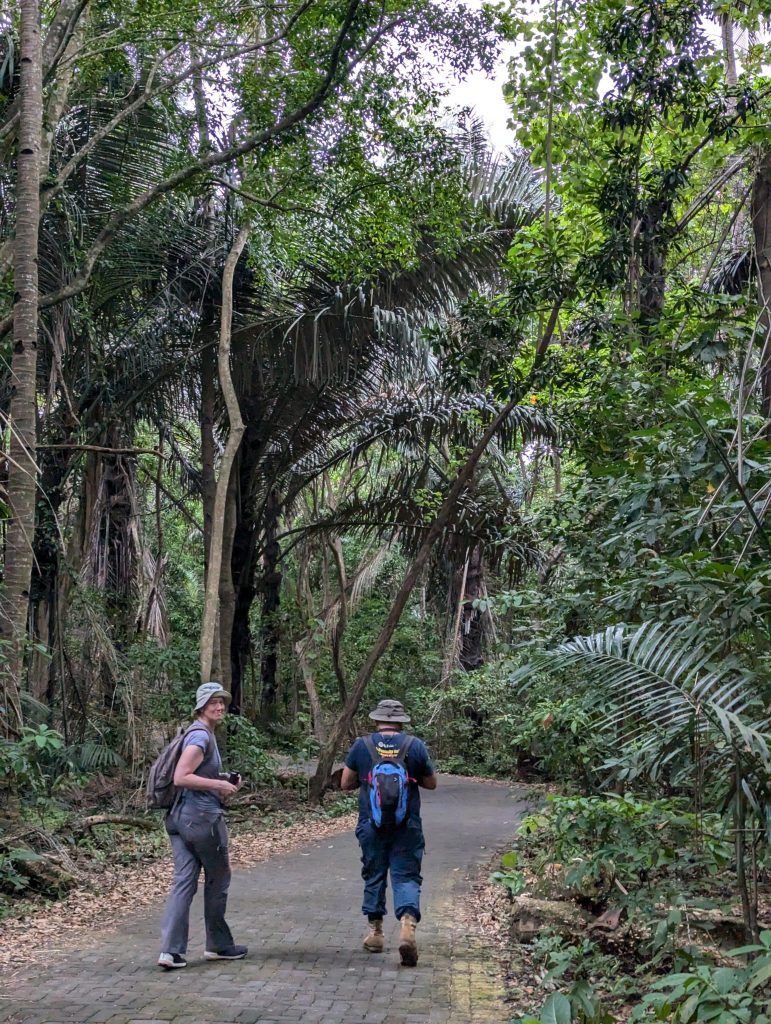
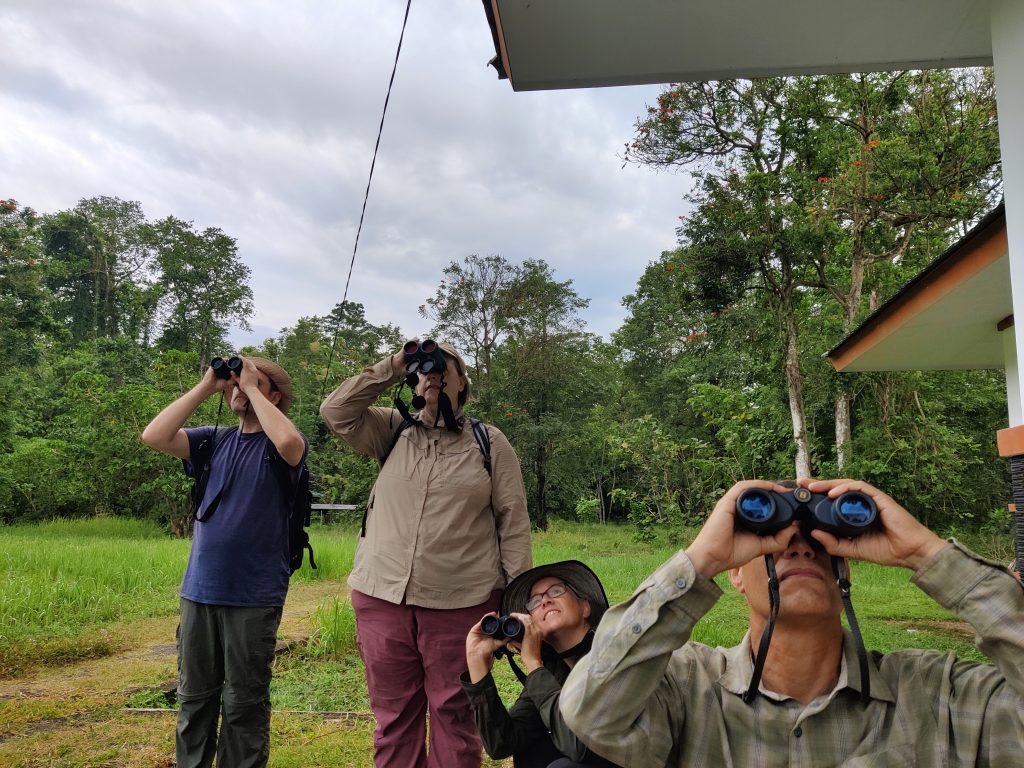
We saw a ton of birds that morning, including Sulawesi hornbills, two species of sunbird, drongos, parrots, koels, munia, and heron. However, most of the birds were far, far away, so we didn’t get many photos. It was a nice day to be out walking, though, and the excitement of just seeing birds that are found nowhere else on Earth was fun. We also saw some new parts of the reserve, including a lovely black sand beach where we saw herons and more kingfishers.
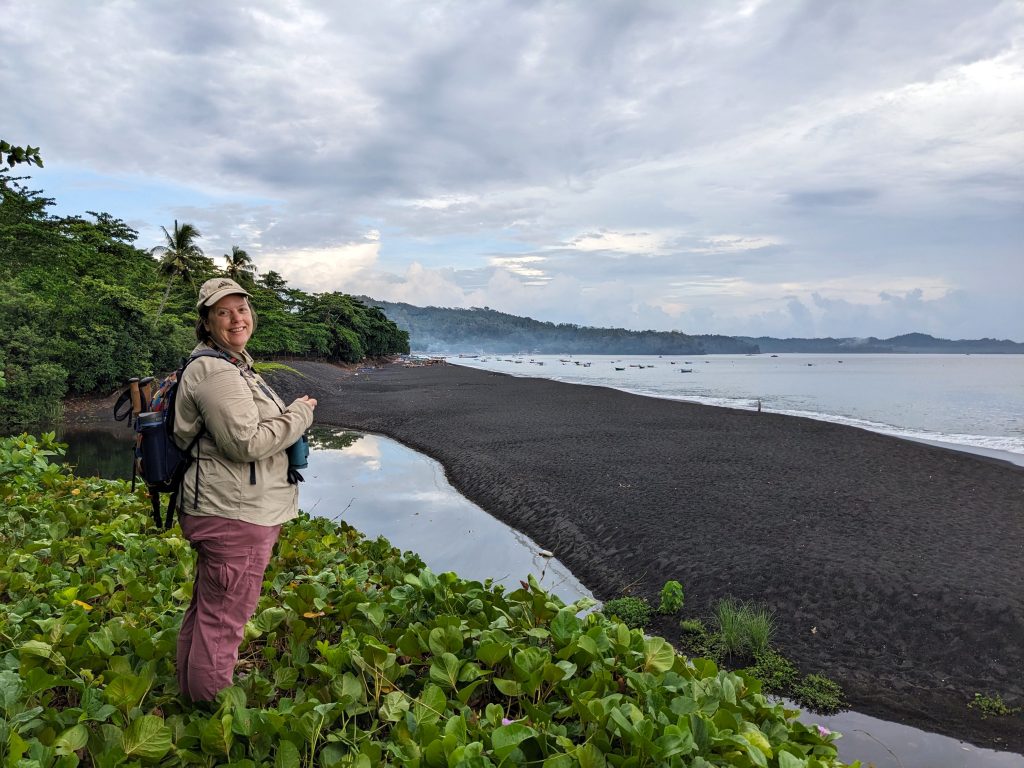
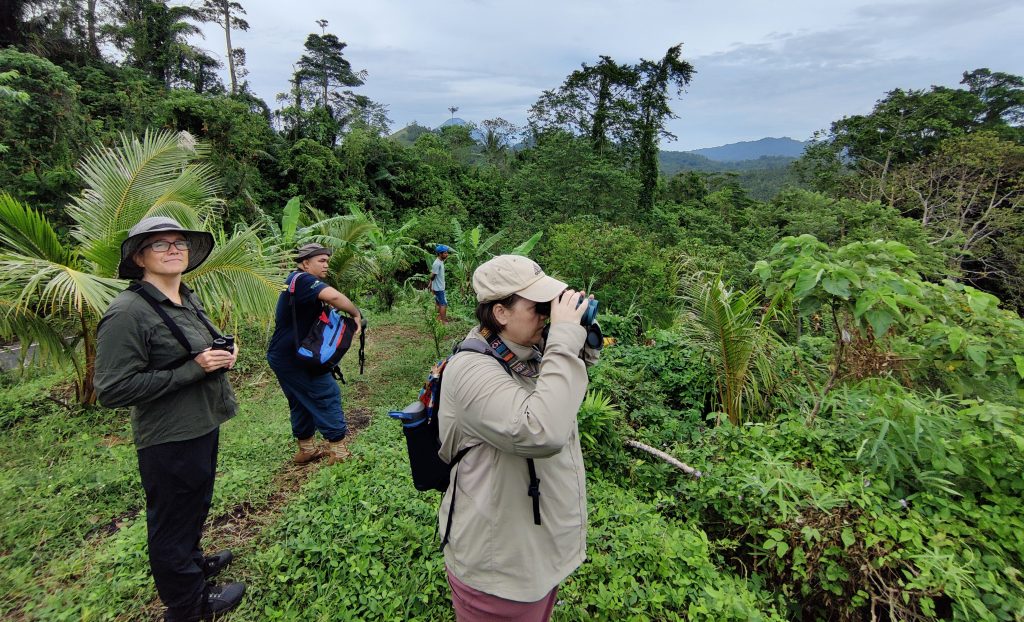
Towards the late morning we were starting to get tired as our guide led us into a barely-there trail into the thick rainforest. We wandered here and there for a while as he listened for another rare kingfisher. He told us to wait for him while he wandered around on his own to find it, and so we had a reprieve from walking, but not from the dank heat of the forest. Soon enough we decided we’d seen enough birds for the day, and when he came back, we told him it was OK, and we’d like to go back to the villas. Tangkoko was outstanding, but we’d had enough heat and humidity. Overall, Tangkoko was a magical place to spend the first part of our Sulawesi adventure!
